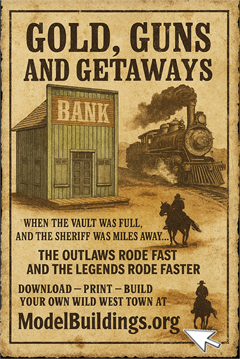Everything on model trains, model railroads, model railways, locomotives, model train layouts, scenery, wiring, DCC and more. Enjoy the world's best hobby... model railroading!
Dead Spots on Track
Burton who models in HO asks:
“I run a DC setup with 8 blocks 2 of which cross on a 45 degree. I had one dead spot 12 inch long and now have another on the same block about 8 inch. My voltmeter says I have a short but I can’t find/see anything. The track is ballasted. Any ideas?”
10 Responses to Dead Spots on Track
Leave a Reply















Is this a new fault or one that has been there from the beginning? It would help to fault trace if you supply a diagram of your setup and where the dead sections are.
Robert
I have included a poor sketch. 1 block works fine 2 is where the problems are. ‘A’ showed up about 2 months ago. Hadn’t got around to trouble shoot it when ‘B’ showed up 2 weeks ago. I did ballast the track cementing with iso and PBA and the problem showed up 6-8 mos later.
It’s possible this may be related to the ballast. I have had sections where the glue for the ballast has wicked between a rail joiner and the track, leaving a poor or intermittent connection. This often does not show up for a while until the glue is fully set and dried.
You can get the same problem sometimes when you weather the track and the weathering agent gets in the rail joiner. This is more the case if you detail with an airbrush.
I’m guessing that A and B are separate sections of track, that the dead spot is the complete track section, and that you have a power feed between A and B. Otherwise, it’s hard to see how you could get two dead sections in those places. But assuming that’s the case, then the most likely answer, as Jeff says, is that the rail joiner is not making good enough contact with the next piece of track. So you either need to add a power feed to those two dead sections, or else bridge the rail joiner somehow.
You say you have dead spot, and the voltmeter shows a short? That doesn’t make sense. The voltmeter should show nil on the dead spot.
May I suggest you change to DCC asap. You wont have all the hassles as above and I cannot understand how anyone would stuff around with the old block system when we have the technology of today.
Ray – Play fair. Some of us dream of using DCC but are either cash strapped or have invested far too much over a long period to make the change. The old scale/gauge wars are creeping into the dc/dcc choices world.
Did you check for dirty track. If you have a bad connection you would not have power on the track at any point past the dead spot unless you have drops between the dead sections
If there was a short circuit, trains would not run on any track electrically connected to that section.
If the dead sections are single pieces of track, it suggests that the rail joiners are failing to connect, possibly due to contamination (as others have said), or corrosion, or just plain loose.
Also possible, risers may have become loose or disconnected. Check for loose wires underneath.
Disconnect the controller from the track and try continuity testing along each rail to find the break.
Please let us know what you discover.
I only suggest using a voltmeter to check the current on both blocks of your 45-degree crossing. I don’t think it’s your ballast. However, you can always run a little sandpaper over the area following up with Isopropyl alcohol to make sure it’s clean.
thank you all for your ideas and suggestions. other life things have popped up so this took longer than I hoped. I cleaned the particular areas of track thoroughly, redid the ballasting, moved and resoldered the power connections and now the track is working and performing well. Not sure which fix did the trick but I only wanted to disassemble the whole thing once.
thanks again